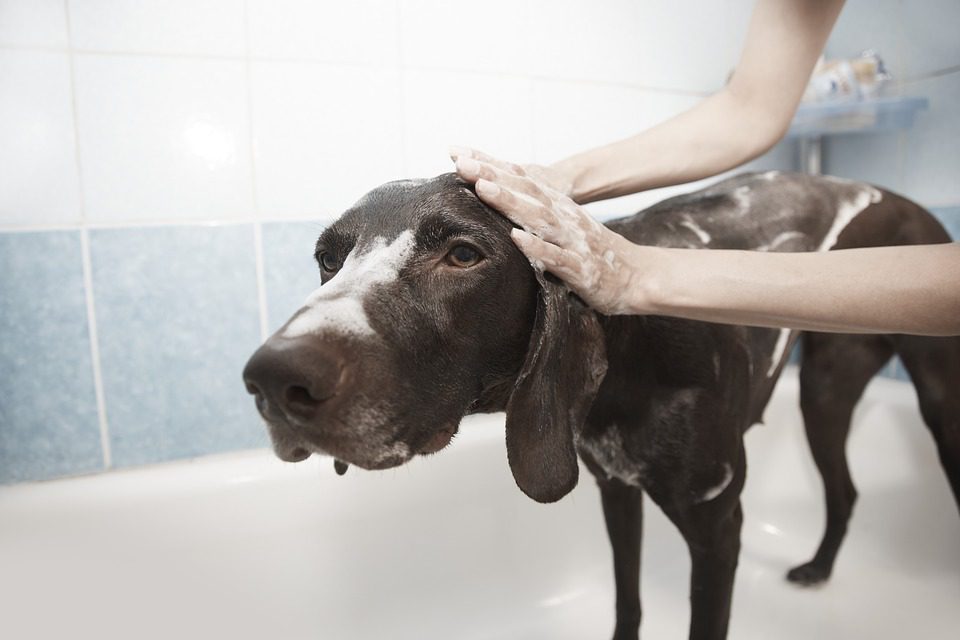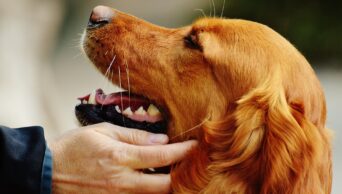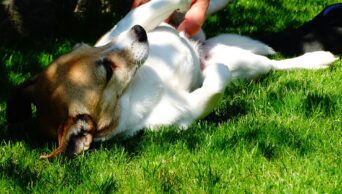Essential Guide to DIY Dog Grooming
Blog , +1
December 15, 2015

You don’t need to hire a professional groomer to have a dog that’s in tip-top condition. Grooming your dog at home isn’t as hard as you might think and it can actually become a valuable bonding experience between you and your four-legged friend.
Brushing
Brushing your dog is essential and has a number of benefits. Brushing gets rid of excess fur and dirt in the coat and helps to prevent tangling in long haired dogs. It also spreads natural oils through your dog’s coat, which conditions it and keeps it healthy and shiny.
How frequently you need to brush your dog depends on your dog’s coat length and type. Dogs with long hair need brushing weekly and sometimes more. Short haired dogs only usually need brushing every couple of weeks. Start brushing from your dog’s head to the tail, paying attention to all the layers of fur. As you go check your dog’s fur for ticks, fleas, scratches and lumps and bumps that may need attention.
Wash
Most breeds only need to be bathed once a month – good news for our four legged friends who aren’t normally fans of bath time! It’s really important that you buy a dog shampoo that suits your dog’s age, skin and coat type. Don’t be tempted to use your shampoo as it’s formulated for human skin and will disrupt your dog’s pH levels and can cause problems.
Preparation is the key for a successful bath time so get everything ready before you bring your dog into the bathroom. Be gentle and work quickly, shampooing your dog’s body, but avoiding ears, eyes and mouth. Use lots of verbal praise throughout bath time and even some tasty treats if they make getting squeaky clean more bearable for your dog.
Clean Teeth
Just like us, dogs can develop plaque buildup, tartar and gingivitis which can lead to serious health problems like heart, liver and kidney disease. You should brush your dog’s teeth three times a week, every day if possible. If your dog really doesn’t like having their teeth cleaned, just do as much as you can and spread cleaning the whole mouth over a few days. Plenty of praise as you go is essential and a treat afterwards is a good idea as it means your dog will associate brushing to being rewarded.
It’s important to know that human toothpaste contains ingredients that are toxic for dogs and can cause serious health problems if ingested, so always buy toothpaste designed specifically for dogs. If your dog has any worrying symptoms such as bad breath, growths in the mouth, swollen gums or discoloured and broken teeth, take them to the vets immediately.
Clean Ears
Ideally you should clean your dog’s ears once a week; with cotton wool dampened with a specialised ear cleaning solution for dogs (all pet shops stock this). Start from the outside and work your way in, but only until you feel resistance – don’t go further otherwise you may damage the ear. While you’re cleaning check your dog’s ears – healthy ears will be light pink with no irritation or debris. If your dog has any redness, swelling, hair loss, dark wax or if their ears smell this can indicate health problems, so you’ll need to get them checked at the vets.
Trim Nails
Trimming your dog’s nails can be nerve wracking if you’re not used to it. Before you start it’s important to know that if you trim the nails too much they’ll bleed. However if you don’t trim them they can break, get infected and even lead to an altered gait – it’s important. As a rule of thumb, a dog’s nails should be trimmed when they’re just touching the ground when they walk (and if they’re longer than that already it’s definitely time for a trim). How often you need to trim your dog’s nails will depend on their level of exercise and where you walk them.
Hold your dog’s toes firmly as you trim the nails, using a specialist trimmer for dogs, cutting the nail from top to bottom, at a slight angle. Be cautious and just cut a little bit of the nail with each pass until you see the beginning of a circle on the cut surface, which will still be nail coloured. This circle alerts you to the fact you’re nearing the quick, so don’t go any shorter. If the nails have rough edges you can smooth with an emery board. As with all of the other grooming steps, positive praise and associations are essential.
Do you groom your dog yourself? We’d love to hear any tips you’d like to share.


